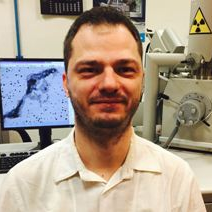Casting and Solidification Processing
A special issue of Metals (ISSN 2075-4701). This special issue belongs to the section "Metal Casting, Forming and Heat Treatment".
Deadline for manuscript submissions: closed (31 December 2021) | Viewed by 49181
Special Issue Editor
Interests: raw materials; structural integrity of welded joints and additively manufactured components; welding and heat treatment simulation; cast iron; stainless steels; material selection
Special Issues, Collections and Topics in MDPI journals
Special Issue Information
Dear Colleagues,
Casting is one of the most important shaping processes largely used and consolidated throughout the world to produce near-net-shaping parts. The advantages compared to other manufacturing processes are evident: relative low production cost and time, high ranges of thicknesses and masses allowed, possibility to shape alloys that are only castable (cast iron or certain light alloys), highly adaptability to the requirements of mass production and last, but not least, the excellent bearing quality of the casted parts. However, all these advantages could be lost if the process parameters are not correctly calibrated to obtain near defect-free casting components. In most foundries, such parameter calibration is entrusted to experience rather than real knowledge of the rules governing the solidification phenomena. A comprehensive understanding of those rules is still unknown to the academic world and represents a formidable challenge. This Special Issue will collect recent research works about casting and solidification processing in order to give the reader an overview of the actual knowledge about casting phenomena. Papers dealing with, experimental, theoretical, and numerical analyses of casting and solidification processing are welcome.
I was asked by the Journal Metals to be the Guest Editor for a Special Issue devoted to “Casting and Solidification Processing”. Given your expertise in the field, I would like to invite you to submit a manuscript to be considered for inclusion in the Special Issue. Manuscripts should be submitted through the journal’s web platform. There will be a slot activated for the Special Issue “Casting and Solidification Processing”. Please do not forget to “tick” the correct box accordingly. The manuscripts will undergo the standard review process of the journal and will be judged exclusively based on their scientific content.
I look forward to hearing from you at your earliest convenience.
Prof. Dr. Paolo Ferro
Guest Editor
Manuscript Submission Information
Manuscripts should be submitted online at www.mdpi.com by registering and logging in to this website. Once you are registered, click here to go to the submission form. Manuscripts can be submitted until the deadline. All submissions that pass pre-check are peer-reviewed. Accepted papers will be published continuously in the journal (as soon as accepted) and will be listed together on the special issue website. Research articles, review articles as well as short communications are invited. For planned papers, a title and short abstract (about 250 words) can be sent to the Editorial Office for assessment.
Submitted manuscripts should not have been published previously, nor be under consideration for publication elsewhere (except conference proceedings papers). All manuscripts are thoroughly refereed through a single-blind peer-review process. A guide for authors and other relevant information for submission of manuscripts is available on the Instructions for Authors page. Metals is an international peer-reviewed open access monthly journal published by MDPI.
Please visit the Instructions for Authors page before submitting a manuscript. The Article Processing Charge (APC) for publication in this open access journal is 2600 CHF (Swiss Francs). Submitted papers should be well formatted and use good English. Authors may use MDPI's English editing service prior to publication or during author revisions.
Keywords
- Microstructure
- Solidification
- Defect
- Modeling
- Casting processes
Benefits of Publishing in a Special Issue
- Ease of navigation: Grouping papers by topic helps scholars navigate broad scope journals more efficiently.
- Greater discoverability: Special Issues support the reach and impact of scientific research. Articles in Special Issues are more discoverable and cited more frequently.
- Expansion of research network: Special Issues facilitate connections among authors, fostering scientific collaborations.
- External promotion: Articles in Special Issues are often promoted through the journal's social media, increasing their visibility.
- Reprint: MDPI Books provides the opportunity to republish successful Special Issues in book format, both online and in print.
Further information on MDPI's Special Issue policies can be found here.





